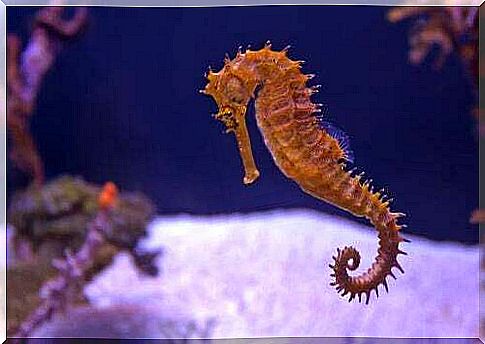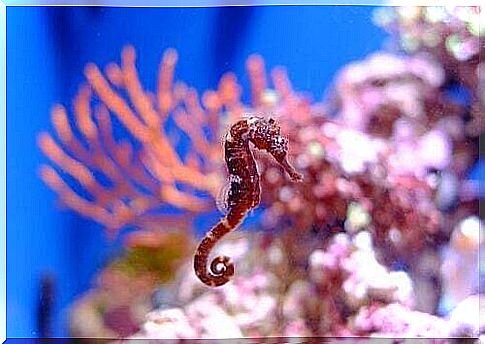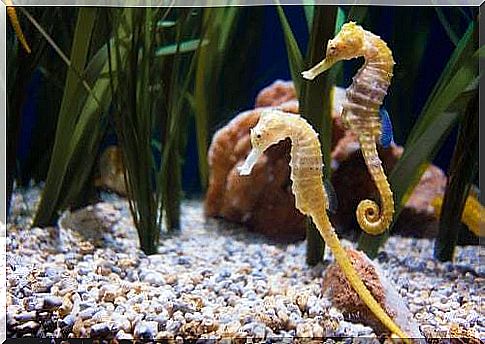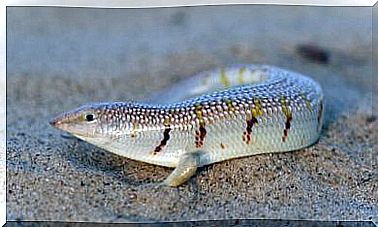The Seahorse: One Of The Few Animals With A Male Pregnancy

The seahorse or hippocampus is a very particular animal that attracts our curiosity and is also the subject of numerous studies by scientists.
Let’s say that it is a rather curious animal, because physically it has a muzzle like that of a horse and as regards reproduction, it is the males who hatch the eggs. Discover in this article the characteristics of the seahorse, a very fascinating species.
Origin of the name
The scientific name of the seahorse is Hippocampus . This species belongs to the Syngnathidae family , which includes about 54 species, including the so-called pipefish.
The word Hippocampus derives from the union of two terms from classical Greek: hippos , which means “horse”, and kampos , which means “sea monster”.
The first name was undoubtedly given to it for its physical resemblance to horses, mainly for its muzzle and head, and the second for its different shape compared to other fish and its peculiar way of swimming underwater.
The more than 50 species of seahorse live mostly in tropical and shallow waters, with warm temperatures up to 28 ° C. They usually move mainly among the corals and mangroves on the coasts of the Atlantic Ocean and the Mediterranean Sea.
Another peculiar aspect of the seahorse is that it has the ability to blend in with the environment, changing the color of the skin or developing long filaments that make them look like plants or algae. In this way, they escape their main predators: tuna, goldfish and crab, among others. In fact, they are too slow to swim away.
Physical characteristics of the seahorse
One of the aspects that most amazes us about the seahorse is its body, which is covered by a sort of “armor” with rings or plates of bones. And not only that, but it also has a prehensile, coiled tail, which allows it to cling to underwater plants and corals.

The way he swims is closely related to the shape of his body; it makes it move forward, in a vertical position, thanks to the well developed dorsal fin.
Seahorse reproduction system
Beyond its physical appearance, one of the main curiosities concerning the seahorse is the fact that it is the males who carry on the pregnancy, called male pregnancy, and who are responsible for caring for the fry afterwards.
In addition, the reproduction of the seahorse is seasonal, that is, it occurs at certain times of the year, that is, when it is hot and the water temperature rises.
After a very fascinating ceremonial dance, the male and female entwine their prehensile tails for 15 minutes. Once this time has elapsed, the male expels the seminal fluid to the outside.

Once the male is fertilized, gestation lasts for up to six weeks. The gestation period depends a lot on the water temperature.
When this period has elapsed, the moment of “birth” arrives, which is quite painful and traumatic for the male. Using its tail, it clings to a plant or coral and contracts the body several times in a row so that the young come out. The fry will be an exact copy of the parent, but small in size.
Upon hatching, a seahorse can “give birth” to up to 400 fry. During the first days, the fry enter and exit the incubator pouch of the paternal belly several times: in fact, they use it to take refuge when they perceive a danger.
It is worth noting that the seahorse is a monogamous species, as a result of which pairs remain mated for life. Moreover, it is a rather territorial species and in which the female moves more than the male: respectively 100 m² and 1 m².









